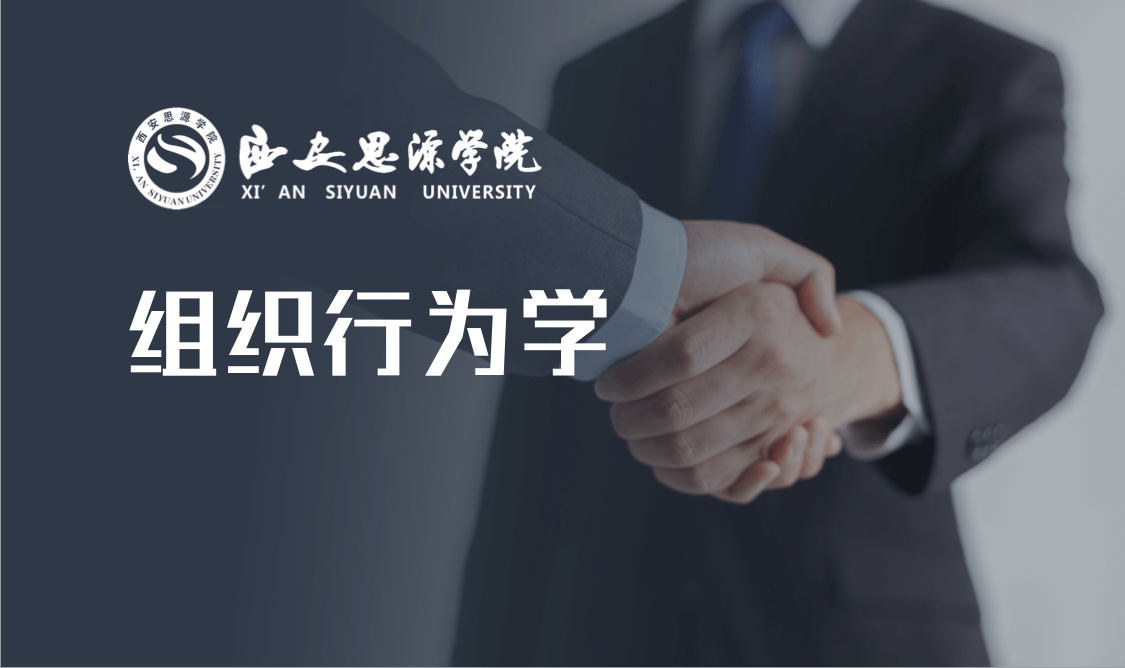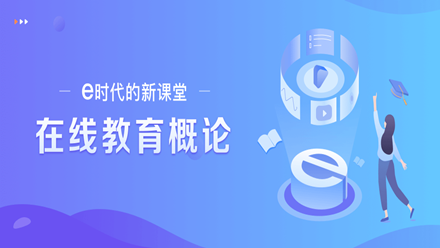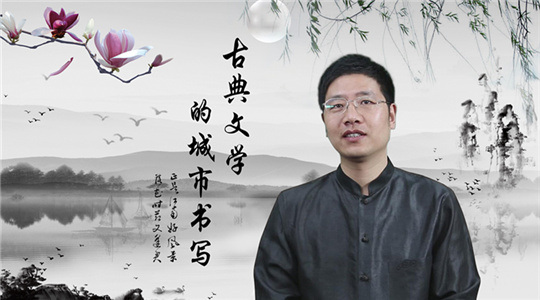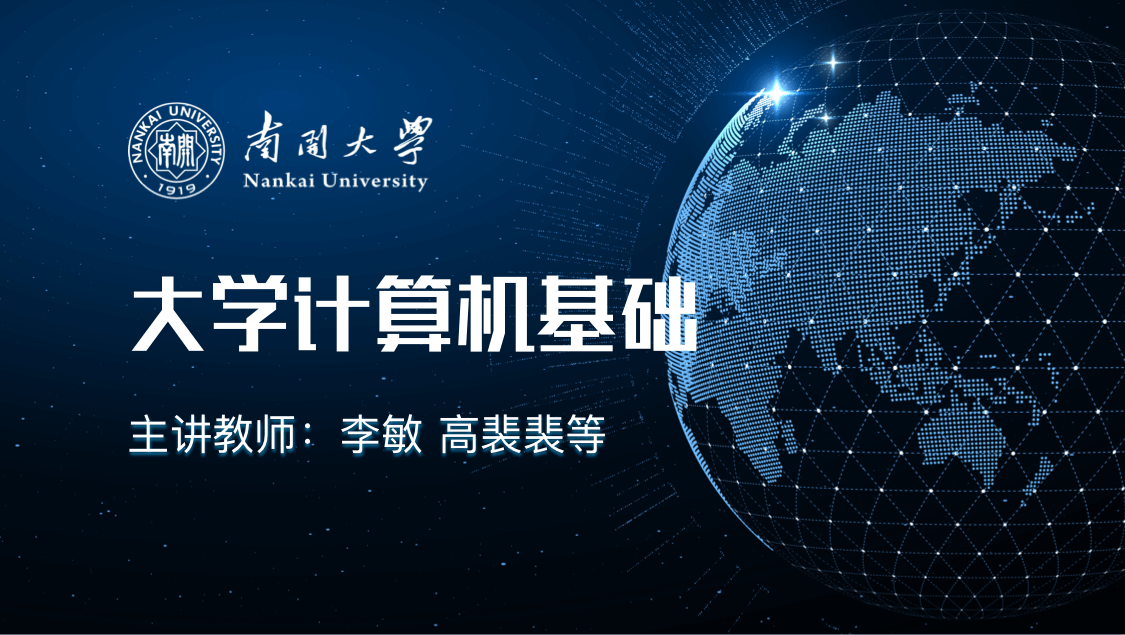
当前课程知识点:e时代的新课堂——在线教育概论 > 第一章 解读在线教育 > 1.2.2教育的技术发展史 > 1.2.2教育的技术发展史
比如说第一个阶段是口头语言
The first stage concerns oral language.
口头语言时代
Who was the most ideal iconical educator
最有代表性的一个大教育家是谁
in the era of oral tradition?
就是苏格拉底
Socrates.
你看我给大家选了两幅画
I have two paintings for you.
两幅画都描述的是
Both of them depict a scene
整个希腊的那种口头语言
of oral education,
就是对话式的教学的场景
or dialogic teaching in ancient Greece.
所以大家仔细看
Look at the paintings carefully.
在这个场景里是没有书的
You'll find that there are no books in the scene.
如果你看到哪幅画里
If you find a book
描述的口传时代带有一本书的话
in a painting depicting the era of oral tradition,
这个描述肯定是错误的
it's definitely a mistakeprobably wrong.
在口传的这样一种技术的
How was education practiced
生态环境下
in the ecosystem
教育怎么实施呢
of oral tradition?
教育就是靠人和人的口头对话
It was practiced by dialogue between people.
那么知识怎么样去保存和传递呢
Then how was knowledge preserved and transmitted?
它靠的是人的记忆
It relied on people's memory.
记忆本身是非常不准确的
Memory itself can be very inadequateinaccurate.
所以由此产生了口传时代的
It thus gave rise to many features
很多的这种特征等等
of education in the era of oral tradition.
所以这是第一个
So, this is the first stage.
我们人类教育所实施
Oral language was the earliest
所采用的一种最早的信息技术
information technology
就是口头语言
used by educators.
第二个阶段其实就是
The second stage concerns
柏拉图和亚士多德所采用的
the approach used by Plato and Aristotle's approach.
那个时候希腊人已经创制了
At that time, the Greeks had developed their alphabet.
今天的整个字母文字
The origin
最早的一个源头
of today's alphabetic languages
就是希腊的字母文字体系
can be traced back to the Greek alphabet.
那么这个希腊这种文字体系
In the beginning,
它最早写在莎草纸上
Greek scripts were written on papyri
后来又写到了羊皮纸上
and then on parchments.
我在这儿也给大家展示了最早的
I'll show you one of the earliest manuscripts here.
你看 书卷它是一个卷起来的
You see, it was
就羊皮卷和莎草卷
a scroll made from parchment or papyrus,
不是像我们今天册子本的书
different from the codices we use today.
什么时候书的形制
When did the form of books
变成了今天的册子本的书呢
change into what we use today?
这个过程据学者考证
According to research,
它跟基督教的这个传教
the process has a lot to do with
有很大的关系
the mission of Christianity.
可能是为了携带方便
Perhaps, in order Likely tto make books easy to carry,
所以图书大约在
people gradually changed
公元一世纪到三世纪四世纪之间
from scrolls to today's codices
逐渐的从那种卷子本
between the first century
变成了今天的册子本
and the third or fourth century.
在这个册子本初见之后
At the time that codices came into being,
当时就是知识的表达方式
knowledge was mainly expressed
主要靠比如说用字母文字
in written form, like alphabetic texts,
写在这种莎草卷或者是羊皮卷上
on papyrus or on parchment scrolls.
那怎么样出版呢
But how were books published?
因为有一个卷的话
Did you know that one scroll
只有一个人能看到 对吧
could only be read by one person at the same time, right?
我们怎么能让更多的人能接触
How could more people
看到这样的人类经验和智慧呢
receive get access to human experience and wisdom?
那时候的图书出版方
During that era,
靠的就是手工抄写
books were handwritten and published.
你看我这儿有一张图片
Look, I have a picture here
给大家展示了
that depicts
这就是一个抄书匠的一个画面
a scribe copying books.
所以在人类历史很长一段时间
So, for a long time in human history,
尤其在西方历史上
especially in the west,
一直到中世纪
people published books
持续到15世纪以前
mainly in the form of handwriting
西方主要的图书出版方式
throughout the Middle Ages,
就是靠人的手工抄写
until till the 15th century.
这是第二个段
This is the second stage.
第三个阶段其实到了
The third stage
对今天教育影响最大的
is marked by printing technology
就是印刷技术
which impacts today's education the most.
那么这个印刷技术包括第一个维度
The first dimension of printing technology
它知识的表达
was the expression of knowledge.
当然还是从属于字母文字
It was, of course, expressed in the form of alphabetic texts.
但是这个时候的字母文字
But at thate time,
就更为丰富了
there were more alphabetic languages.
有拉丁文
Gradually Latin books
后来又逐渐转成了通俗语版的
were translated gradually included versions ofinto other common languages,
比如说德语 法语 英语
like such as German, French and English.
这些民族语言逐渐的成形
These national languages took shape little by little.
他们都属于字母文字
They are all alphabetic languages.
那么印刷技术时代
When the era of printing technology came,
中国的蔡伦的这个人造纸技术
China's papermaking technique invented by Cai Lun
已经传遍了整个欧洲
had spread to the whole entireof Europe.
然后15世纪中叶
Then, in the mid-1500s,
德国人古登堡
a German, Johannes Gutenberg,
发明了基于这个字母文字的
invented the a letter-based
活字印刷技术
movable type printing technology.
这两项技术合在一起
The combination of the two technologies
就大大的增加了日常生活中
gave common people access
我们普通人可以接触到的
to more information and reading materials,
这种信息的读物的这个种类和数量
both in types and in number.
比如说这个就是古登堡发明的
This is the printing press
那个印刷机
invented by Gutenberg.
旁边的那个就是排字的
Next to it are some boxes for typesetting
那样一些盒子 还有一些字钉
and some metal letters.
然后现在这儿给大家展示的就是
What I'm presenting here is
其中第一个就是古登堡圣经
the Gutenberg Bible.
就第一本真的是被活字
It Twas the first book printed
这样一种技术印刷出来的图书
by using the movable type printing technology.
就是古登堡圣经
The is the Gutenberg Bible was the first.
另外随着这种字母文字
SinceAs alphabetic texts
因为它印刷速度会比较快
could be printed very quickly,
紧接着又出现了一些
soon after,
像那种小册子 报纸
printed materials such as pamphlets, newspapers, etc., and other reading materials
这样的一些快速的信息出版物
with short a fast publication processlifecycles
就出现了
began to appearcame into beings.
我们今天一直延续出版到今天
One of the earliest journals
最早的一本
that has survived to the present day,
其实就是今天的英国皇家学会会刊
is the "Philosophical Transactions of the Royal Society".
它早期刚刚出版的时候
When it was first published,
是叫哲学汇编
the journal was called "Philosophical Transactions".
就是学术的
It was an academic journal
就连续出版的学术期刊
that was published continuously.
这样一些出版物就逐渐出现了
Similar publications Publications like this gradually came into beinggradually appeared.
所以随着这样各种各样的
Therefore,
出版物的出现
with the variety of publications,
就大大的丰富了人们日常生活中
people had more opportunities
接触信息 接受教育的机会
to receive information and education in daily life.
我们今天所熟知的这样一套
Printing technology bredgave birth to
以班级授课制为核心的
the modern school system
现代学校制度
centering on based on classroom teaching,
就是在印刷技术环境下出现的
with which we're familiar.
在19世纪30年代
In the 1930s,
我们人类进入到了
human beings entered into the fourth stage:
第四个传播技术这样的一个阶段
the stage of media technology development.
这个阶段我们把它称为叫
We call it the stage of
电子传播
electronic media.
它的代表性的技术最早是电报
Example techTypical technologies of this stage in the earliest days include telegraphs in the earliest days
后来有了广播和电视
and later radio and television broadcasting.
广播电视这种技术出现之后
After the birth of radio and television broadcasting,
实际上我们在一个
We hadthere were two symbol systems
传播过程里面的这个符号表达
for expression
就出现了两套符号体系
in the process of transmission.
一套是跟我们人的感官
One symbol system
比如说眼睛 耳朵还有接触的
is related to our sensory organs,
这样一套符号体系
such as eyes and ears.
我们把它叫表意符号系
We call it the ideogram system.
另外其实在它的存储和传播的
Whereas in another symbol system,While in the process
过程里面
During the process of storage of storage and transmission,
它实际上是以那种
information is actually transmitted
模拟电信号的形式去传播的
in the form of analog signals.,
模拟电信号的传播速度约等于
Thereotically, whose the velocity of analog signals is approximately equal
理论上 等于光速
to the speed of light, theoretically.
所以这个传播就是大大加快了
This mode kind of transmission has accelerated
全球不同区域人的这种交流
the communication among people in different regions of the world,
所以真正把世界
turning the planet
变成了一个地球村
into a global village.
在广播电视这种技术出现之后
After the invention radio and television broadcasting arose,
我们人类也开始尝试
people began to
采用这种新的技术
apply this new technologyOffer educational services
作为一种教育的服务和提供方式
with the new technologyto educational services.
在这种技术环境下
In this technological environmentWith the help of such technology,
出现那种最重要的教育形态
the most important form of education appeared:
其实就是我们今天的
the radio and television university program
广播电视大学
that we know today.
当然中国现在改名了
Of course, it's now renamed as
叫国家开放大学
the Open University of China.
世界上第一所
The first institution
通过广播电视
engaged adopted in distance education
进行远程教育的机构
through radio and television broadcasting
就是英国开放大学
in the world
就是Open University
is The Open University of the UK.
然后中国的它出现于1969年
In China…
它是1969年建立的
The Open University of the UK appeared in 1969.
那么中国的中央广播电视大学
China Central Radio and TV University
是1979年建立的
was established in 1979.
最后就要说到我们今天的
At last,
互联网了
we come to the stage of iInternet era.
所以我们今天互联网出现之后
After the birth of the Iinternet,
首先在这个表意符号系统的
这个维度上
in the dimension of the ideogram system,
我们是越来越丰富了
we have more and more meansricher expressio forms,
用了文字 图片 游戏 视频等等
such as texts, pictures, games, videos and others.
所以今天我们会认为
SoTherefore, today we think that
在线教育的一个非常重要的特征
a very important feature of online education should be
就是我们很多的知识的这个表达
the expression and transmission
包括它的传播
of knowledge
已经大量的开始借助于互联网
completed through with the Iinternet,
这样一种环境
through this environment
in the Internet envrionment,
这样一种平台
on the Internet platformor platform,
不再局限于纸的这种图书
instead of rather than being limited restricted to paper hardcopy sbooks.
这是它第一个重要的一个特征
This is the first important feature of online education.
第二个重要特征就是我们在
The second important feature,
互联网的这种技术支持下
is backed supported by Iinternet technology.
它采用的这种电路是数字电路
Information is expressed in digital electronics,
就是我们俗称的
or as we know,a system consisting of 0 and 1
01的这种表达方式
a binary system consisting of 0 and 1as we know.
那么这种表达方式
This mode way of expression
它可以压缩
allows data compression
也可以做各种计算
and various data calculations.
所以我们今天出现的
Big data, AI and other emerging technologiesy
这种大数据、AI等等
that we have today
都跟它的这种技术
are all closely related
存储和传播的格式有很大的关系
to the way information is digitally stored and transmitted.
在这样一种新的环境下
In this new environment,
我们会发现
wWe would realize that
我们越来越多的这种知识
people are began toincreasingly
它的表达形态
expressing knowledge
express knowledge in a digital way
就开始采用这种数字化的形态
Digitallymore and more frequently.
所以这个时候出现了一种
As a result,
全新的一种教育形式
a new form of education was born.
就是我们这一讲的主题
It is exactly the subject of our lecture,
在线教育
online education.
-混合式教学该怎么做?与清华老师一起聊聊
-看清华老师如何进行大班混合式教学
--Video
-如何做好混合式课堂的互动
--Video
-与清华大学老师聊聊慕课独特的教学设计
-“挑战60s”授课短视频大赛
--Video
-与清华大学老师聊聊慕课的制作与运营
--Video
-1.1在线教育发展现状
--html
-1.1.1在线教育带来了e时代的新课堂
-1.1.2师生说
--1.1.2师生说
-1.1.3我国在线教育的特点
-1.2什么是在线教育
--html
-1.2.1概念解析
-1.2.2教育的技术发展史
-1.2.3在线教育的五要素模型
-1.3在线教育对教师的机遇与挑战
--html
-1.3.1机遇篇
--1.3.1机遇篇
-1.3.2挑战篇
--1.3.2挑战篇
-1.4在线教育发展的历史
--html
-1.4.1二十世纪的发展
-1.4.2二十一世纪的发展
-1.4.3在线课程三要素
-1.4.4虚拟教育组织
-1.5课程内部体系和外部关系
-第一章 解读在线教育--单元习题
-讨论题
-2.1数字时代带来教育变革
-2.2在线教育更适应学生的学习需求
--html
-2.2.1教育需求的发展
-2.2.2学习风格与学习类型
-2.2.3多模态数据分析学生学习行为与需求
-2.2.4教育目标
-2.2.5拓展学习时空,促进深度学习
-2.2.6自主学习系统的案例分享
-2.3在线教育帮助教师成长
-2.4学校和国家为什么要做在线教育
-单元习题--作业
-3.1高等学校在线教育发展
-3.1.1学校现状
-3.1.2平台与联盟
-3.2不同类型的教师都能得益于混合式教学
-3.3混合式教学的好处
-3.3.1当前的教学问题
-3.3.2教师和学生的收益
-3.4混合式教学的关键细节与常见误解
-3.4.1关键细节一
-3.4.2关键细节二
-3.4.3关键细节三
-3.4.4误解篇一
-3.4.5误解篇二
-3.5智慧教学工具的发展
-3.5.1综述篇
--3.5.1综述篇
-3.5.2雨课堂的诞生
-3.5.3雨课堂的功能
-3.5.4课堂教学需要雨课堂
-3.5.5雨课堂解决面授时间紧张的问题
-3.5.6雨课堂解决课前课中课后的学习效果问题
-3.5.7课前课中课后雨课件设计要点
-第三章 高校在线教育进行时--单元习题
-讨论题
-讨论题
-4.1教育实践的展望(一) 教育创新
-4.2教育实践的创新(二) 教育技术与决策
-4.3教育理论的热点趋势
-第四章 在线教育的未来--单元习题
-讨论题
-5.1邓俊辉老师《数据结构》与《计算几何》教学案例
--html
-5.1.1慕课制作与使用心得(一)
-5.1.2慕课制作与使用心得(二)
-5.2张瑜老师《思想道德修养与法律基础》教学案例
--html
-5.2.1教学理念与混合式教学的主要环节
--Video
-5.2.2章节实例
-5.3杨芳老师《大学英语》教学案例
--html
-5.3.1混合式教学设计心得
-5.3.2 University单元教学设计
-5.4于歆杰老师《电路原理》教学案例
--html
-5.4.1小容量班级完全翻转课堂
-5.4.2大容量班级部分翻转课堂
-5.5郑莉老师《C++语言》教学案例 雨课件样例及校内教学心得分享
--Video
-单元习题--作业






